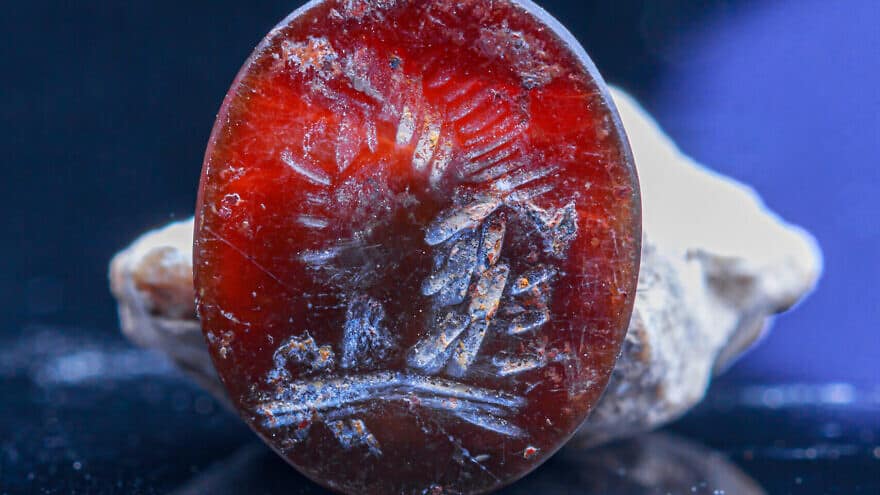According to researchers, the tiny gem seal, the third ever found in Jerusalem from the Second Temple period, was likely the property of a Jew.
A 2,000-year-old gem seal bearing the portrait of the Greek god Apollo has been unearthed in soil removed from the foundation of Jerusalem’s Western Wall during the Tzurim Valley National Park sifting project, the City of David announced in a statement.
According to researchers, this is only the third such gem seal ever found in Jerusalem from the Second Temple period.
The gem is cut from dark brown jasper, considered a precious stone in antiquity, and has remnants of yellow-light, brown, and white layers. Oval-shaped, it is also extremely small, being half an inch in length, two-fifths of an inch wide and only about one-ninth of an inch thick.
Because the gem is an intaglio (that is, a gem with a design carved into its upward-facing side), its main function was the stamping of a seal on soft material, usually beeswax, for use as a personal signature. The gem features an engraving of Apollo’s head in profile to the left.
Shua Amorai-Stark, an expert on engraved gems, told the Jewish News Syndicate: 'Among Apollo's spheres of responsibility, it is likely that association with sun and light (as well as with logic, reason, prophecy and healing) fascinated some Jews, given that the element of light versus darkness was prominently present in Jewish worldview in those days.'
He also noted that the specific colours were not chosen by accident, but were likely used to highlight 'the aspect of light in the god's persona.'
Apollo is said to have been the most loved of all the Greek gods and stories say he was the son of Zeus and twin brother of Artemis.
The Archaeological Sifting Project at Tzurim Valley National Park, sponsored by the City of David and the Nature and National Parks Authority, is a large scale archeological project that offers the public an opportunity to experience and appreciate archeological activity without the need for advanced training or specialised knowledge. The project is closely supervised by archaeologists, and allows participants to become “archaeologists for a day” as they process material unearthed in City of David excavations.
Discoveries made by the project thus far include an imprint of King Hezekiah, coins from various periods, arrowheads and jewellery.
Read also on Greek City Times:
1,600 year old Greek inscription discovered at Ancient site of Israel

